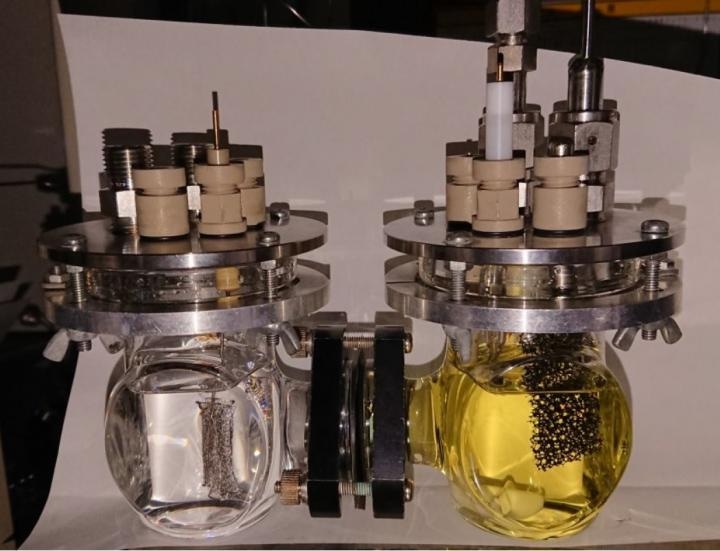Nov 29 2018
At Tokyo Institute of Technology (Tokyo Tech), chemists have suggested a novel method through which carbon capture can be achieved with the help of a rhenium-based electrocatalytic system that has the ability to reduce low concentrations of CO2 (as low as 1%) with excellent selectivity and durability. This promising technology could allow direct utilization of CO2 present in exhaust gases emitted by heavy industries.
 The CO2 reduction reaction takes place in the cathodic chamber shown on the right. (Image credit: Chemical Science)
The CO2 reduction reaction takes place in the cathodic chamber shown on the right. (Image credit: Chemical Science)
Today, researchers are one step closer to discovering the effective means of reducing CO2 levels—which represent a significant part of responding to challenges concerned with energy efficiency and climate change.
Now, a study, headed by Osamu Ishitani of the Department of Chemistry, Tokyo Tech, shows how low-concentration CO2 can be effectively captured through electrocatalysis. The study has been reported in Chemical Science.
In this analysis, Ishitani and colleagues, including Tetsuya Nishikawa and Hiromu Kumagai, drew on years of work on perfecting the capabilities of a rhenium-based catalyst, and showed how it can reduce low concentrations of CO2 in the presence of a chemical known as triethanolamine (TEOA).
While a number of studies in the past have focused on decreasing pure CO2, not much has been explored on how to directly capture low concentrations of CO2 in an efficient way—a subject that requires more research, since plants harness low-concentration CO2 (roughly 400 ppm, that is 0.04% of the atmosphere) and also because of the fact that exhaust gases emitted by heavy industries usually contain low CO2 levels (about 3%–13%).
By preventing the necessity for condensation processes that consume more amounts of energy, the researchers’ strategy, if scaled up, may possibly offer a more practical and environmentally friendly solution for capturing CO2 in various settings.
In this regard, a number of experiments were performed to evaluate electrocatalytic activity, which eventually allowed the team to discover that at 1% of CO2 concentration, the rhenium-based catalyst exhibited very high selectivity—as high as 94%—towards the formation of carbon monoxide (CO).
According to the researchers, one possible reason behind this high performance is the efficient addition of CO2 into the rhenium-oxygen bond.
Next, the researchers will continue to thoroughly explore the potential approaches to help lower real-world CO2 levels.
The research was funded by a CREST (Core Research for Evolutional Science and Technology) program on Molecular Technology backed by the Japan Science and Technology Agency (JST).